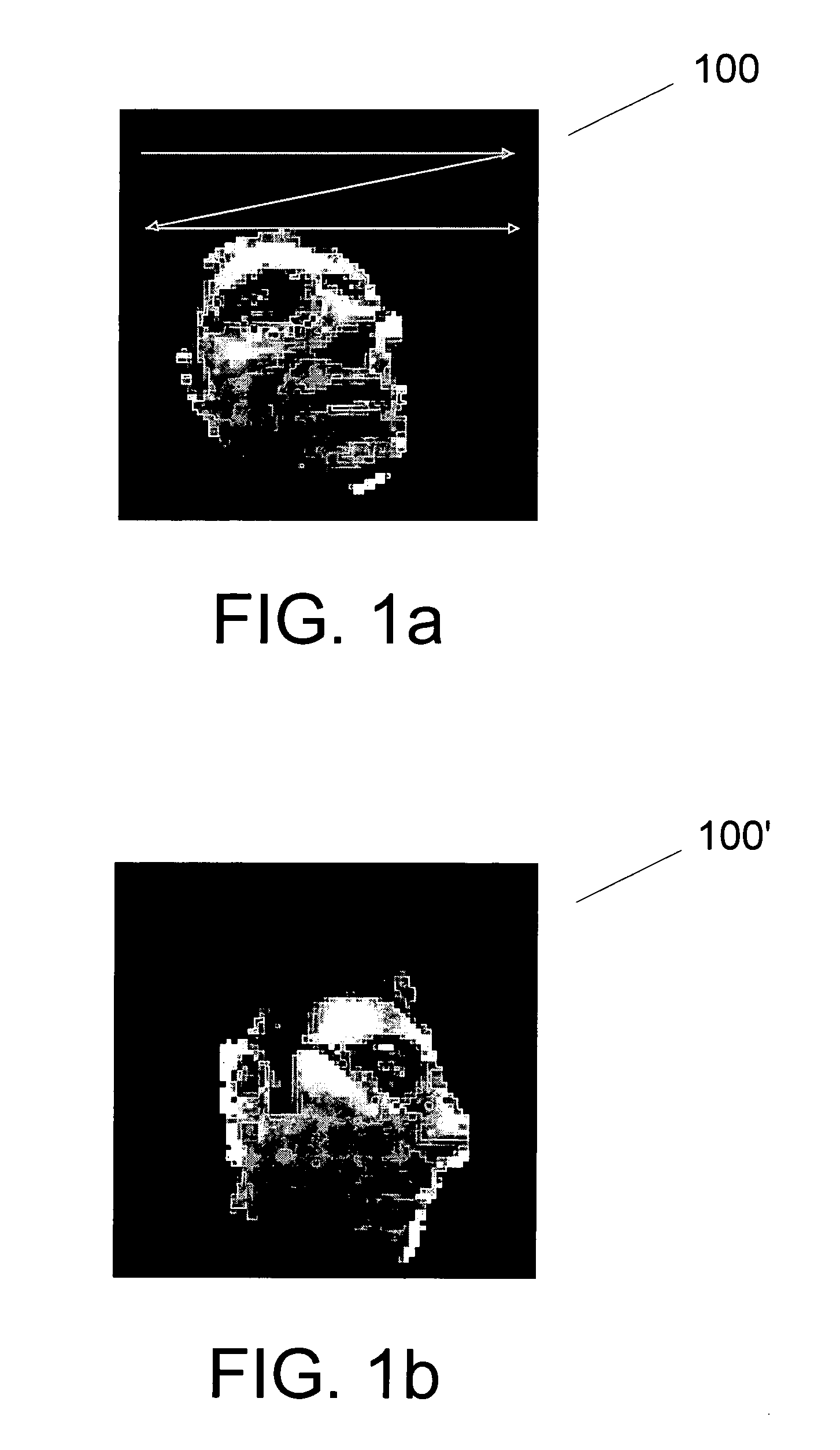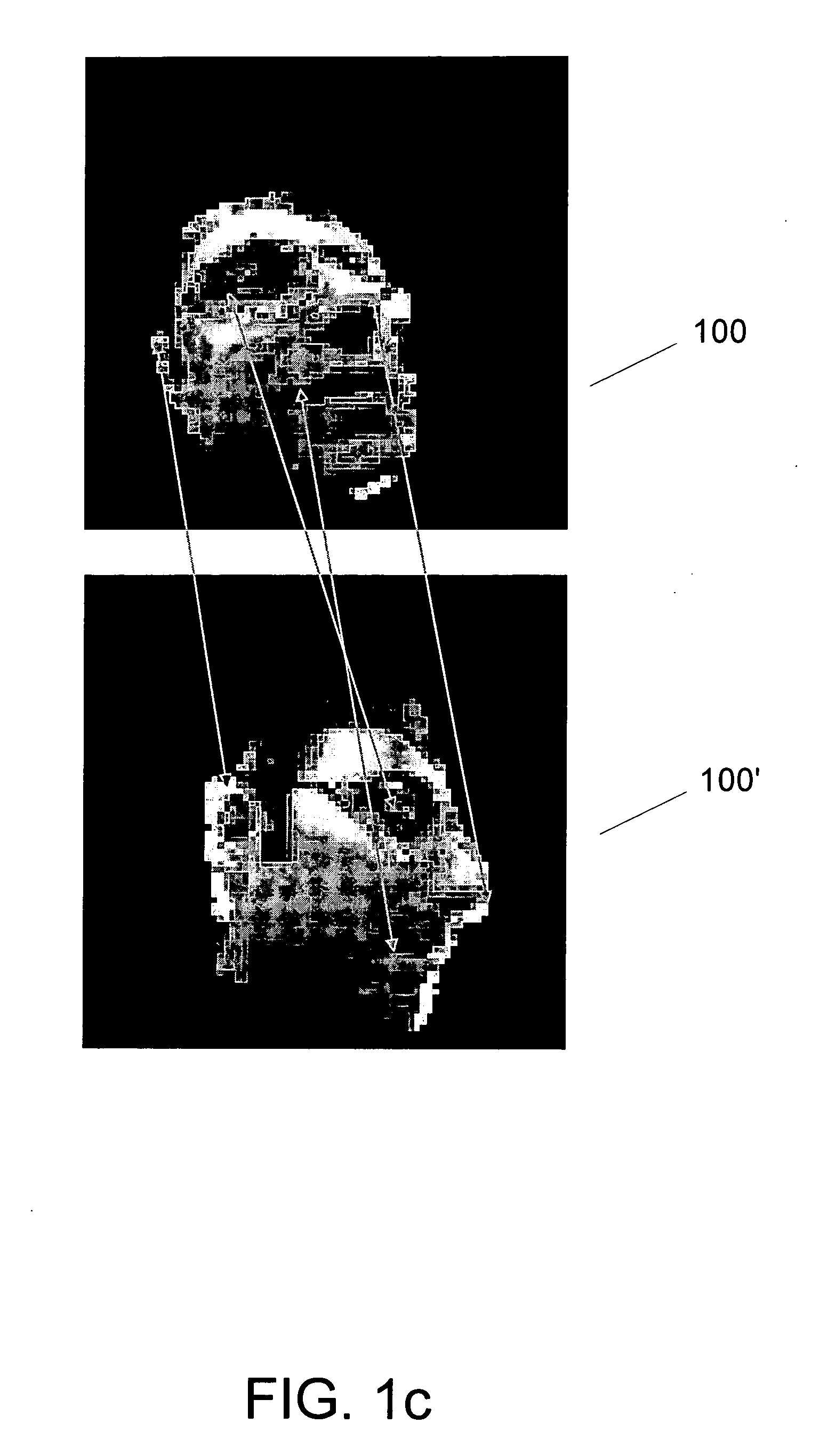Ordered data compression system and methods
a data compression and data compression technology, applied in the field of machine learning techniques for processing data, can solve problems such as local minima, false or unreliable, and incompatibility or inconsistent subsequent model estimation algorithms
- Summary
- Abstract
- Description
- Claims
- Application Information
AI Technical Summary
Problems solved by technology
Method used
Image
Examples
example 1
[0065] In this demonstrative example, joint invariance learning and model learning was performed using process 400 on a set of (X, Y) point images of digits. The digits 3 and 9 were represented as a collection of 70 (X, Y) pixels by sampling regions of high intensity in 28×28 gray scale images of the digits 3 and 9 (See e.g., FIG. 8a). The 70 (X,Y) pixels are seen as clouds of 2-dimensional points in the shape of 3's or 9's. Twenty such point images used as the raw input data set (FIG. 5, set 530). Optimal permutation matrices Ai (min) were estimated for each of the twenty point images by iteratively minimizing a cost function C(A), and the permutation invariant eigenspace for PCA modeling of the data was identified (step 450FIG. 4). PCA was then conducted to identify ten significant eigenvectors. Twenty original point images were reconstructed using these eigenvectors as a basis. FIG. 8c shows twelve of the reconstructed images corresponding to the original point images shown in FI...
example 2
[0066] In another demonstrative example, T=300 gray scale images of faces were obtained. The face images were of a single individual's face under various lighting, 3D pose and expression configurations. (See e.g., FIG. 9(a)). Pixels in skin-colored regions of the images were sampled to obtain a collection of N=2000 (X, Y, I) pixels for each face image. The 300 image data set was subject to permutation invariance and model learning using process 400. Due to the larger size of this input data set, during the minimization of the cost function C(A), the variable doubly-stochastic At matrices, which are of size O(N2) were stored as 2N scalars and estimated using the conventional so-called “Invisible Hand” algorithm. The data set was described by 20 significant eigenvectors (step 460FIG. 4). Each of the N=2000 (X, Y, I) pixel image data thus was compressed to a set of 20 eigenvalues or coefficients. The images were reconstructed using the 20 coefficients. The reconstructed images are show...
example 3
[0070] In this third demonstrative example, several thousand audio spectrograms of 200 frequency bands were collected. The audio spectrograph for each of the 200 frequency bands was represented as 2-tuples of amplitude and frequency. This large raw data set was processed with permutational invariance learning in the manner similar to that described in example 2. The data set was described by 20 significant eigenvectors (step 460FIG. 4). The audio spectrographs were reconstructed using 20 eigenvalues.
[0071] As in the previous examples, the data was also analyzed using conventional PCA without learning permutation invariance.
[0072] FIGS. 11(a) and 11(b), respectively, show plots of the squared reconstruction error for audio spectrographs taken from a close-talking microphone and from a wide area microphone. Both figures show the reconstruction errors obtained for PCA under the convex invariance framework, and for comparison that obtained for conventional PCA.
[0073] Software or comp...
PUM
 Login to View More
Login to View More Abstract
Description
Claims
Application Information
 Login to View More
Login to View More - R&D
- Intellectual Property
- Life Sciences
- Materials
- Tech Scout
- Unparalleled Data Quality
- Higher Quality Content
- 60% Fewer Hallucinations
Browse by: Latest US Patents, China's latest patents, Technical Efficacy Thesaurus, Application Domain, Technology Topic, Popular Technical Reports.
© 2025 PatSnap. All rights reserved.Legal|Privacy policy|Modern Slavery Act Transparency Statement|Sitemap|About US| Contact US: help@patsnap.com



